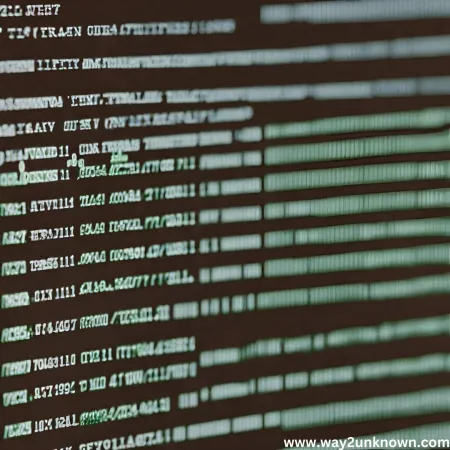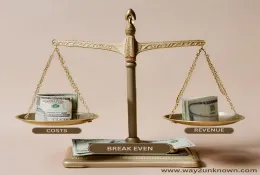Exploring the Diverse Applications of Generative Artificial Intelligence (GenAI)

Generative Artificial Intelligence (GenAI) is revolutionizing industries like art, design, and entertainment by collaborating with human creators to produce awe-inspiring artworks, predict trends, and craft immersive experiences. In healthcare, GenAI enhances precision by analyzing medical images for early disease detection, expediting drug discovery, and enabling personalized treatment plans tailored to individual patient profiles. Its applications extend across various sectors, offering unparalleled creativity in art and design while revolutionizing healthcare with precise diagnostics and tailored therapies, promising a future of innovation and progress driven by harmonious collaboration between artificial intelligence and human intellect.
 "Break even" denotes the point at which a business neither makes a profit nor incurs a loss, where total revenue equals total costs. It is determined by considering both fixed costs, which remain constant, and variable costs, which fluctuate with production or sales volume. Calculating the break-even point is vital for businesses to understand the minimum level of sales needed to cover expenses and start generating profit.
"Break even" denotes the point at which a business neither makes a profit nor incurs a loss, where total revenue equals total costs. It is determined by considering both fixed costs, which remain constant, and variable costs, which fluctuate with production or sales volume. Calculating the break-even point is vital for businesses to understand the minimum level of sales needed to cover expenses and start generating profit. "Break the bank" is an idiomatic expression signifying spending a substantial amount of money, often beyond one's means. It originates from the notion of breaking into a bank vault to access large sums of money, suggesting an action involving significant financial risk or investment. Figuratively, it can also represent exceeding expectations or achieving remarkable results, typically through substantial effort or resources.
"Break the bank" is an idiomatic expression signifying spending a substantial amount of money, often beyond one's means. It originates from the notion of breaking into a bank vault to access large sums of money, suggesting an action involving significant financial risk or investment. Figuratively, it can also represent exceeding expectations or achieving remarkable results, typically through substantial effort or resources.
 "Move the goalposts" describes the act of changing the criteria or conditions of a discussion or situation after they have already been established. This alteration often makes it harder for the other party to meet the original expectations or succeed in their efforts. Recognizing this tactic is crucial for maintaining transparency and fairness in discussions and negotiations.
"Move the goalposts" describes the act of changing the criteria or conditions of a discussion or situation after they have already been established. This alteration often makes it harder for the other party to meet the original expectations or succeed in their efforts. Recognizing this tactic is crucial for maintaining transparency and fairness in discussions and negotiations. "Putting out fires" refers to addressing urgent or unexpected problems as they arise, often at the expense of planned tasks or goals. Originating from firefighting, it describes a reactive approach to problem-solving rather than a proactive one. While necessary for managing crises in the short term, it's essential to balance firefighting with proactive measures to prevent future emergencies and maintain long-term stability.
"Putting out fires" refers to addressing urgent or unexpected problems as they arise, often at the expense of planned tasks or goals. Originating from firefighting, it describes a reactive approach to problem-solving rather than a proactive one. While necessary for managing crises in the short term, it's essential to balance firefighting with proactive measures to prevent future emergencies and maintain long-term stability. "Out of pocket" describes expenses incurred personally by an individual without reimbursement, covering various costs from everyday items to significant bills. It also denotes a state of unavailability or inaccessibility, particularly in a professional context, when someone is unreachable or not present to attend to business matters. Whether referring to personal expenses or availability, the term underscores financial responsibility and the need for effective communication in managing affairs.
"Out of pocket" describes expenses incurred personally by an individual without reimbursement, covering various costs from everyday items to significant bills. It also denotes a state of unavailability or inaccessibility, particularly in a professional context, when someone is unreachable or not present to attend to business matters. Whether referring to personal expenses or availability, the term underscores financial responsibility and the need for effective communication in managing affairs. A "cash cow" is a term used in business to describe a product, service, or investment that consistently generates substantial profits with minimal investment. It symbolizes a reliable source of income akin to a cow that produces abundant milk. Businesses often prioritize nurturing and maintaining cash cows to support long-term financial stability and growth by reinvesting profits or distributing dividends to shareholders.
A "cash cow" is a term used in business to describe a product, service, or investment that consistently generates substantial profits with minimal investment. It symbolizes a reliable source of income akin to a cow that produces abundant milk. Businesses often prioritize nurturing and maintaining cash cows to support long-term financial stability and growth by reinvesting profits or distributing dividends to shareholders. The phrase "to go from rags to riches" denotes a journey of significant socioeconomic advancement, often from poverty to wealth or from humble beginnings to great success. It symbolizes overcoming adversity and achieving remarkable success through hard work, determination, and resilience. These stories inspire others with the potential for upward mobility and the pursuit of dreams, showcasing the transformative power of perseverance and opportunity.
The phrase "to go from rags to riches" denotes a journey of significant socioeconomic advancement, often from poverty to wealth or from humble beginnings to great success. It symbolizes overcoming adversity and achieving remarkable success through hard work, determination, and resilience. These stories inspire others with the potential for upward mobility and the pursuit of dreams, showcasing the transformative power of perseverance and opportunity. The phrase "costs an arm and a leg" is a vivid idiom used to emphasize that something is extremely expensive or financially burdensome. Its origins are uncertain, but it likely originated in mid-20th century America, drawing on the notion of the significant sacrifice implied by losing a limb. This expression serves as a colorful and memorable way to convey the idea of excessive cost or financial strain.
The phrase "costs an arm and a leg" is a vivid idiom used to emphasize that something is extremely expensive or financially burdensome. Its origins are uncertain, but it likely originated in mid-20th century America, drawing on the notion of the significant sacrifice implied by losing a limb. This expression serves as a colorful and memorable way to convey the idea of excessive cost or financial strain. "Tighten the belt" is an idiom suggesting the need to cut unnecessary expenses in response to financial constraints or to achieve savings goals. Originating from the literal act of adjusting one's clothing for a tighter fit during lean times, it symbolizes the conscious effort to live within one's means and manage finances more prudently. This phrase encourages individuals and organizations to reassess spending habits, prioritize essentials, and adopt more efficient practices to navigate economic challenges effectively.
"Tighten the belt" is an idiom suggesting the need to cut unnecessary expenses in response to financial constraints or to achieve savings goals. Originating from the literal act of adjusting one's clothing for a tighter fit during lean times, it symbolizes the conscious effort to live within one's means and manage finances more prudently. This phrase encourages individuals and organizations to reassess spending habits, prioritize essentials, and adopt more efficient practices to navigate economic challenges effectively.